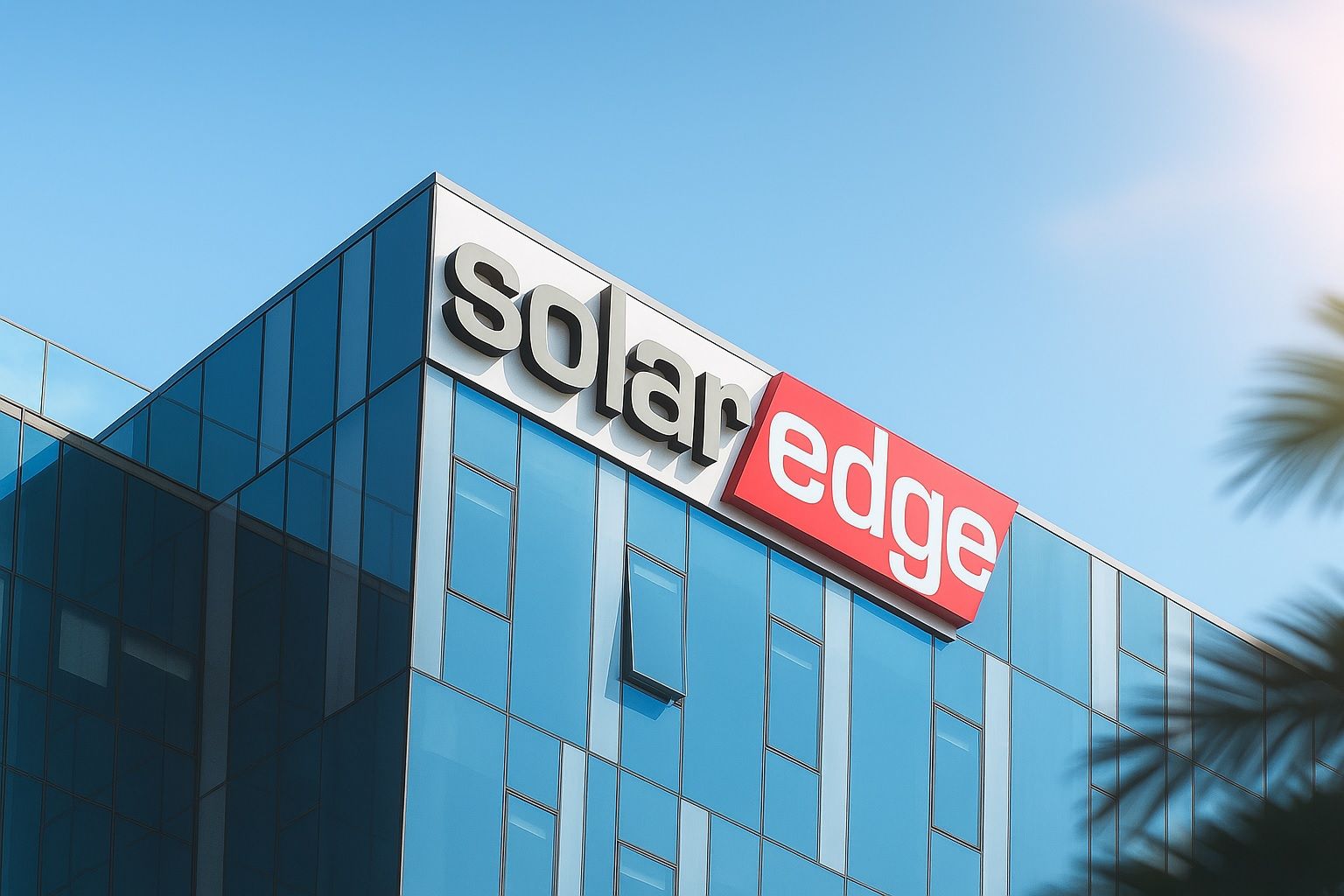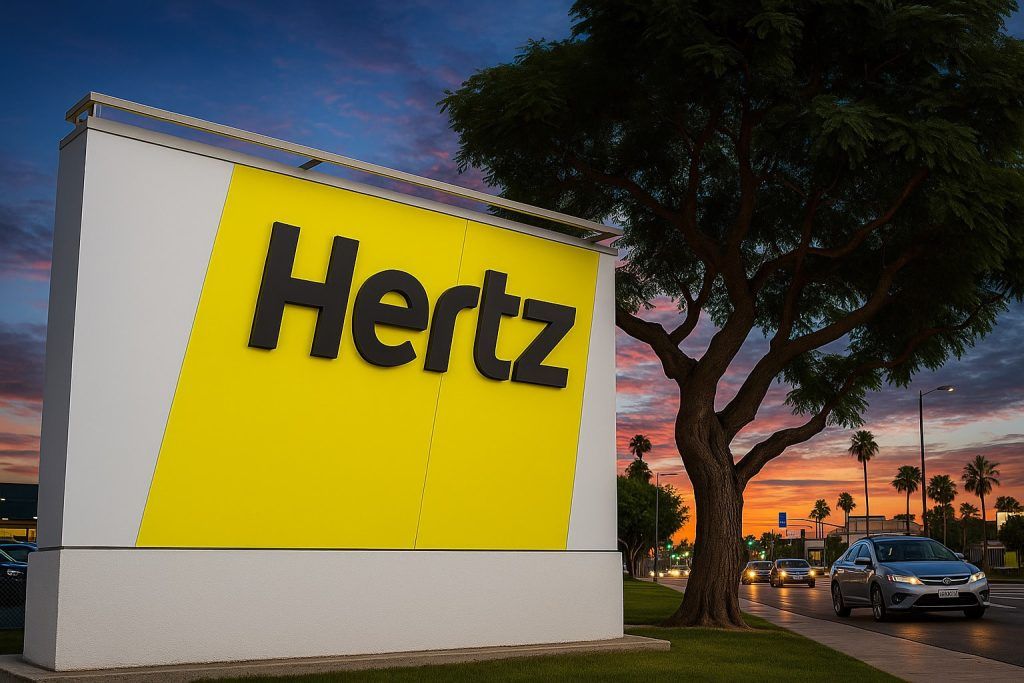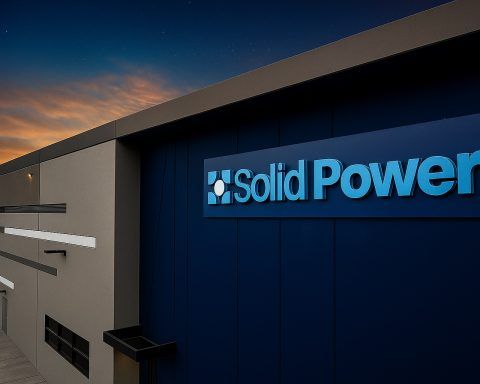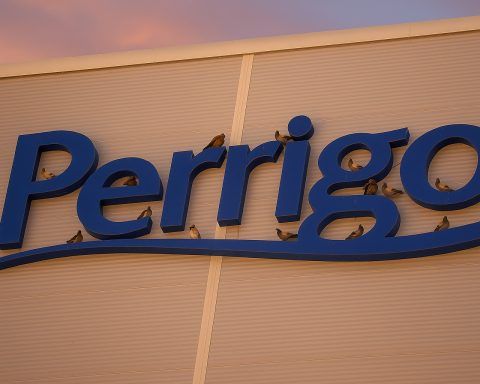- Q3 Earnings Beat Estimates: SolarEdge Technologies (NASDAQ: SEDG) reported Q3 2025 revenue of $340.2 million (up 44.5% year-over-year) and an adjusted net loss of $0.31 per share – both better than analysts expected (revenue beat by ~1.7%, loss was smaller than forecast) [1] [2].
- Weak Guidance Spooks Market: Despite the upbeat Q3 results, SolarEdge guided Q4 revenue at $310–$340 million, about 4–5% below Wall Street’s consensus (~$343 million). This softer outlook raised fears of cooling demand and sent the stock tumbling [3] [4].
- Stock Price Volatile: SEDG shares closed around $32 after earnings (Nov 4, 2025), plunging ~6% in one day [5] [6]. The stock has soared over 100% in 2025 (up ~116% in the past 12 months) after a brutal 2024 collapse [7], but it remains ~19% below its recent 52-week high (~$40 in Oct 2025) [8] and down ~84% from five years ago (a $1,000 investment 5 years ago is worth only ~$160 today) [9].
- Analysts and Experts Cautious: No Wall Street analyst currently rates SolarEdge a “Buy.” The consensus rating is Hold/Sell with 0 Buys, 21 Holds, and 7 Sells, and a median price target of just $27 (about 18% below the current price) [10] [11]. Bears highlight potential headwinds like a possible post-2025 drop in residential solar demand (as a major tax incentive expires) and ongoing cost/tariff pressures [12]. Short sellers are also active – roughly 23% of SolarEdge’s float is sold short – reflecting many bets against the company [13].
- Turnaround Efforts Underway: Management insists a turnaround is in progress. “We’re making steady progress in our turnaround, with three consecutive quarters of revenue growth and improving margins, and we’re not done yet,” said CEO Shuki Nir [14]. SolarEdge has been cutting costs and expanding into new markets (e.g. partnering with Infineon on high-efficiency power tech for data centers) [15]. However, investors remain wary as competition (e.g. Enphase’s new advanced inverters) and macro factors test the company’s path back to profitability [16] [17].
Company Overview and Recent Challenges
Founded in 2006, SolarEdge is a leading provider of smart energy solutions – best known for its power optimizers and inverters that improve solar panel efficiency [18]. The company grew rapidly during the solar boom, but in recent years it has struggled with declining sales and losses. Over the last two years (amid a global solar slowdown), SolarEdge’s revenue actually declined at an annualized rate of 45% [19], and it fell deeply into the red. By late 2024, the company was caught with excess inventory and soft demand, especially in Europe, leading to a dramatic crash in its stock price.
Entering 2025, SolarEdge’s stock was at multiyear lows (it bottomed near $10–$15 per share). Since then, the share price rebounded sharply – up over 100% year-to-date – as the company began showing signs of stabilization. SolarEdge moved to reduce costs and improve margins, and demand in some markets started to recover modestly. This year the company also benefited from easing supply chain issues and new U.S. manufacturing initiatives (which helped it avoid some import tariffs) [20]. Nonetheless, investors remained cautious. SolarEdge’s business is still unprofitable, and its revenue had yet to return to previous peaks. Heavy short interest (about a quarter of the float shorted) underscores that many traders doubt a full recovery is imminent [21].
Q3 2025 Earnings – Big Improvement but Still in the Red
SolarEdge’s third quarter 2025 results, announced on Nov 5, delivered a mix of encouraging progress and lingering concerns. Revenue jumped 44.5% year-over-year to $340.2 million [22], a dramatic increase reflecting a rebound from last year’s very weak levels. This top-line figure slightly beat analyst expectations (consensus was roughly $330 M–$335 M) [23]. The sales rebound was driven by higher inverter shipments (1,471 MW of capacity shipped, up significantly from a year ago) and improved demand in key regions [24]. SolarEdge noted strength in its U.S. segment, aided by ramped-up domestic production, as well as early signs of stabilization in Europe.
On the profitability front, SolarEdge narrowed its losses. The company reported an adjusted net loss of $0.31 per share, which was much smaller than the year-ago loss (over $15 per share loss in Q3 2024, which included big write-offs) and also beat the Street’s expected loss of ~$0.41 [25]. Gross margins improved to about 19–21% (non-GAAP/GAAP) from barely ~11% last quarter [26] [27], thanks to cost-cutting and fewer inventory charges. Operating losses likewise shrank: SolarEdge’s GAAP operating margin was –10.3%, a huge improvement from an abysmal –472% in the prior year period [28]. Free cash flow even inched close to breakeven (about –$2.8 M, versus –$136 M a year ago) [29], indicating much better cash management.
Management struck a hopeful tone. CEO Shuki Nir highlighted that the company has now achieved “three consecutive quarters of revenue growth and improving margins” and expressed confidence that SolarEdge is “positioned for continued growth [and] sustained profitability” as a smart energy leader [30] [31]. These results suggest the worst of SolarEdge’s crisis may be in the rearview mirror – the company is no longer spiraling down as it was in 2024.
However, it wasn’t all good news. Despite the big year-on-year gains, SolarEdge is still losing money, and its margins remain thin for an industry that usually enjoyed healthy profits. Notably, the adjusted EBITDA in Q3 was –$28 M, missing estimates (analysts expected –$20.8 M) [32], implying that costs and pricing pressure are still a challenge. Tariffs on imported components continued to drag on margins by roughly 2 percentage points in the quarter [33]. And while inventory has been worked down, any excess stock from prior overproduction can still weigh on financials.
Disappointing Outlook and Market Reaction
The primary trigger for the recent stock selloff was SolarEdge’s forward guidance. For Q4 2025 (the current quarter), management forecasted revenue of $310–$340 million, which at the midpoint represents only modest sequential growth – and importantly, came in ~4–5% below analyst expectations (~$343 M) [34]. In other words, after the Q3 rebound, SolarEdge signaled that sales may plateau or even dip slightly next quarter relative to Q3. This cautious outlook surprised some investors who expected a more robust continuation of the recovery.
SolarEdge’s guidance implies about 65% year-over-year growth in Q4 (since the year-ago Q4 was extremely weak), but the market honed in on the sequential stagnation and the miss vs. consensus [35]. The company also guided gross margins of 19–23% for Q4 – an improvement from last year, but still low – and kept operating expenses in check (forecast ~$85–$90 M) [36]. Overall, the tone was conservative, suggesting management sees headwinds in the coming quarter.
Investors reacted swiftly. On November 3 (just ahead of the earnings release), SolarEdge’s stock plunged about 7% in one afternoon, falling to the low-$30s [37]. The shares ended that day at $32.84, down 6.4% from the prior close [38]. This drop was fueled by anxiety over the pending results – traders were jittery about the very issues that the guidance confirmed: soft demand and profitability concerns. When the actual earnings came out on Nov 5, the stock continued to slide. By the close on Nov 4 (the day of the release and conference call), SEDG was ~$31.82, down roughly 3% on the day [39] and about 10% lower than a week earlier.
It’s worth noting that SolarEdge’s stock had been on a tear in the weeks prior to this pullback. In October, SEDG rallied strongly, at one point touching $40.53 (52-week high) in late October [40]. Some of that run-up was likely short-covering and speculation that the worst was over. There was also a bout of “less bad” optimism from Wall Street: several analysts had recently raised their price targets in October (for example, RBC Capital hiked its target from $22 to $25 while maintaining a neutral stance, and analysts at Susquehanna, JPMorgan, and Morgan Stanley also boosted their fair value estimates modestly) [41]. These moves, while not outright bullish, signaled that expectations had perhaps bottomed out, helping lift the stock price. By late October, SolarEdge had more than doubled off its 2025 lows, so some pullback on any hint of trouble was almost inevitable.
The Q4 guidance provided that trigger. The notion that demand might not accelerate further – and could even disappoint – led many investors to take profits after the huge rebound. The stock’s volatility is also amplified by the heavy short interest: with ~23% of shares shorted, any news can catalyze big swings as shorts pile on or scramble to cover [42]. Indeed, SolarEdge shares have been extremely volatile, logging nearly a hundred daily moves over 5% in the past year [43]. Current prices around $32 are still up over 116% from a year ago [44], but also a far cry from the all-time highs above $300 reached during the 2020-2021 solar boom. Long-term holders remain deep underwater despite the recent comeback – an investor who put in $1,000 five years ago now has roughly $160 to show for it [45].
Analyst Sentiment and Expert Commentary
Wall Street analysts remain largely unconvinced that SolarEdge’s troubles are over. According to a compilation of 44 analysts’ views, not a single analyst has a Buy rating on SEDG at the moment [46]. The vast majority suggest holding or staying on the sidelines (neutral), and several advocate selling. The consensus price target is about $27 per share, with even the high-end bullish target only around $41 [47]. This median target implies potential downside for the stock from current levels – reflecting concerns that the recent rally may have overshot the company’s fundamentals.
Why so bearish? Analysts cite multiple risk factors. One key worry is future demand for residential solar: A major rooftop solar tax incentive is set to expire at the end of 2025, which could significantly reduce installations thereafter [48]. This looming policy change (likely referring to the step-down of certain subsidies or credits) creates uncertainty for SolarEdge’s core inverter market. If homeowners rush to install solar before incentives lapse, 2025 might be a peak followed by a drop-off in 2026 – a scenario that could hurt SolarEdge’s growth trajectory.
Competitive pressures are another headache. SolarEdge faces fierce competition from rival Enphase Energy, which sells microinverters. Enphase recently announced a new cutting-edge IQ9 series microinverter using gallium-nitride (GaN) technology to improve efficiency for commercial solar projects [49]. News of Enphase’s product launch in September actually sent SolarEdge shares down ~5–6%, as investors worried about losing market share [50]. In general, the solar hardware space is getting more crowded and technologically advanced, meaning SolarEdge must keep innovating to defend its turf. Lower-cost Asian inverter manufacturers also pose a threat, especially in price-sensitive markets.
Analysts additionally point out margin pressure. SolarEdge’s profit margins have been weak due to high costs and tariffs on imports. Tariffs on Chinese-made components (part of the U.S.–China trade war legacy) have directly hit SolarEdge’s cost of goods, shaving roughly 2% off gross margin recently [51]. The company is shifting some manufacturing to the U.S. and other locations to mitigate these tariffs, but that transition is ongoing. Until margins recover into the 20%+ range consistently, profitability will remain elusive. Some analysts are skeptical that SolarEdge can quickly regain its historical margins given pricing competition and potential oversupply of solar equipment.
Short sellers and bearish research firms have been vocal as well. Notably, Guggenheim Securities in September reaffirmed a $7 price target – essentially predicting another ~80% collapse in the stock [52]. Another firm, GLJ Research, set an even more dire target around $6 [53]. These extreme pessimists argue that SolarEdge’s issues (demand weakness, high costs, and a need for refinancing or equity raises if losses continue) could drive the stock much lower. Such dire forecasts are outliers, but they contribute to the cloud of negative sentiment. Indeed, SolarEdge’s “weak” financial health score on some platforms underscores the concern that its balance sheet and cash flow are under strain [54]. (The company does have over $200 M net cash as of Q3 [55], but ongoing losses could erode that if not reversed.)
On the other hand, a few observers see a possible value opportunity after the stock’s drastic fall from grace. The fact that SolarEdge’s stock is up over 100% this year but still so far below its peak suggests that if the turnaround succeeds, there could be significant upside. Some of the more optimistic analysts (e.g. at Scotiabank and Susquehanna) have price targets in the high-$30s to $40 [56], implying the market may be over-penalizing the stock. They note that analysts expect ~29% revenue growth over the next 12 months [57] – a sign that demand could continue rebounding in 2026, especially if SolarEdge’s new products gain traction. Additionally, there have been positive revisions to earnings forecasts in recent months (18 upward EPS estimate revisions vs just 1 down in the last quarter) [58], indicating that the company is outperforming prior worst-case expectations. This gradual improvement in outlook led one analyst to comment that “the tide may be turning, albeit slowly.” Still, until SolarEdge can prove it can generate profits again, most experts are advising caution rather than enthusiasm.
Risks and Opportunities Ahead
SolarEdge sits at a crossroads with significant risks ahead, yet also some opportunities if it executes well:
- Demand Cliff vs. Policy Tailwinds: The concern about a possible post-2025 solar demand cliff is real – if incentives expire without replacement, residential solar installations could dip. However, there’s also a chance that new policies (or extensions of credits) could come into play given governments’ renewable energy goals. The U.S. Inflation Reduction Act, for instance, extended many solar incentives beyond 2025, and some states offer ongoing rebates. Europe’s demand might revive if energy prices spike again or new climate targets are enforced. SolarEdge will need to navigate these policy changes carefully and perhaps diversify into segments less exposed to residential cycles (such as commercial solar, where Enphase is now pushing, or utility-scale projects).
- Intense Competition: Competition is a double-edged sword. While Enphase and others pressurize SolarEdge, the overall solar market is growing, so there may be room for multiple winners if SolarEdge can differentiate itself. SolarEdge’s strength has been its DC-optimized inverter systems which are very efficient for large residential arrays and commercial installations. It’s also moving into adjacent products like battery storage, EV chargers, and smart energy management – offering an integrated solution. These could open new revenue streams. The recent collaboration with Infineon to develop high-efficiency power conversion for data centers is one example of SolarEdge reaching beyond rooftop solar [59]. If successful, such innovation could reduce reliance on the core solar inverter market and tap into booming areas like AI data center power infrastructure. Still, executing on these new initiatives will take time, and SolarEdge faces well-funded rivals in all these areas.
- Profitability and Cost Control: A critical task is to restore healthy margins. SolarEdge’s plans to localize more manufacturing (e.g., building products in the U.S. and perhaps in Europe or India) could lower tariff costs and improve supply chain stability. The company already showed progress by cutting operating expenses significantly this year (GAAP OpEx fell by ~$40 M from last quarter) [60]. It must continue this discipline. The Q3 gross margin (~21% GAAP) was a step up, but management’s Q4 gross margin guide (19–23% non-GAAP) [61] indicates they’re not expecting a big jump yet. Achieving sustained >25% gross margins (closer to historical norms) is likely necessary for consistent profitability. Investors will watch upcoming quarters to see if cost of goods sold comes down further (via cheaper components, economies of scale as volume rises, or tariff reliefs) and if pricing holds up. High interest rates globally are another factor – they increase customers’ financing costs for solar installations, which can dampen demand or squeeze pricing. A pivot by central banks to lower rates in 2024–2026 could indirectly help SolarEdge by making solar investments more attractive for consumers and businesses.
- Balance Sheet and Cash: SolarEdge’s cash position improved in Q3 (net cash ~$209 M) [62], partly due to working capital improvements. It has some breathing room, but if losses were to persist for many more quarters, the company might eventually need to raise capital (debt or equity), which is never welcome news for shareholders. A return to positive free cash flow, which nearly happened in Q3 [63], would greatly strengthen the bull case. That makes the next few quarters critical – showing that Q3 wasn’t a fluke and that SolarEdge can at least break even on cash flow while continuing to grow revenues.
In sum, SolarEdge’s future trajectory is uncertain. The pieces of a rebound are falling into place (strong revenue growth off a low base, improving margins, new products), but significant headwinds (policy, competition, investor skepticism) remain. This dynamic likely means the stock will stay volatile as news unfolds.
Forecast and Outlook
Looking ahead, what can investors expect? In the near term, Q4 2025 results (due in early 2026) will be the next major catalyst. If SolarEdge can meet or beat its conservative guidance and perhaps issue a 2026 outlook that shows continued growth, it might rebuild some confidence. Analysts currently project ~29% revenue growth in the next year [64], which suggests a recovery is underway. However, they also project that SolarEdge will still post a full-year loss for 2025 and only gradually improve financials in 2026. There is hope that 2026 could be the year SolarEdge returns to profitability, but consensus estimates remain cautious.
Market sentiment as reflected in price targets implies that further downside is possible in the stock price – with the average target around $27 [65], some analysts evidently think the recent rally overshot fundamentals. Yet if SolarEdge executes better than expected (for instance, if demand holds up stronger even after incentives drop, or if margin improvements outpace forecasts), the stock could surprise to the upside. The range of analyst targets ($16.50 on the low end to $41 on the high end) [66] underscores the uncertainty and divergent views on this name.
Investors should also monitor macro trends like interest rates (impacting solar financing) and energy prices (high electricity costs can spur solar adoption). Additionally, developments with competitors (e.g., if Enphase or others stumble or grab share) will influence SolarEdge’s fortunes. M&A rumors occasionally swirl in beaten-down sectors – while no concrete acquisition talk exists now, it’s not inconceivable that a larger industrial or energy company could view SolarEdge as a bargain if its stock stays depressed. That speculative angle provides another wildcard for the stock’s future.
In the words of one market commentator, SolarEdge has become a “show me” story – the company will need to show it can maintain growth and restore profitability to truly win back investors. For now, the stock’s dramatic rise and fall in 2025 reflects a tug-of-war between hopes of a turnaround and fears of persistent challenges.
Conclusion
SolarEdge Technologies finds itself at a pivotal moment. After a spectacular crash and partial comeback, the solar inverter maker’s latest earnings report proved it can grow revenues again and cut its losses – but also reminded everyone that challenges abound. The stock’s recent selloff highlights how fragile market confidence is: one hint of softer sales and the bears roar back. With analysts largely sidelined or negative [67] and short sellers circling, SolarEdge will have to deliver solid results in coming quarters to quiet the skepticism.
On the positive side, the company’s turnaround efforts are bearing some fruit (surging sales, better margins, new partnerships), and global demand for clean energy remains on a long-term upswing. If SolarEdge can capitalize on that demand, innovate against rivals, and manage costs, it could reclaim some of its former glory. But until then, it remains a high-risk, high-volatility stock. Public investors should stay informed and cautious – as the recent swings show, SolarEdge’s ride can be as volatile as the energy markets it serves. The coming months will reveal whether this solar stock’s dark days are truly over, or if more storms are on the horizon for SolarEdge shareholders.
Sources: FinancialContent/StockStory [68] [69] [70]; Investing.com [71] [72]; Finviz/StockStory [73] [74] [75]; TickerNerd (analyst consensus) [76] [77]; StockStory (competition) [78]; Finviz (short interest, demand commentary) [79] [80].
References
1. www.financialcontent.com, 2. www.investing.com, 3. www.financialcontent.com, 4. www.investing.com, 5. finviz.com, 6. finviz.com, 7. www.investing.com, 8. finviz.com, 9. finviz.com, 10. tickernerd.com, 11. tickernerd.com, 12. finviz.com, 13. finviz.com, 14. www.financialcontent.com, 15. finviz.com, 16. stockstory.org, 17. finviz.com, 18. www.financialcontent.com, 19. www.financialcontent.com, 20. www.zacks.com, 21. finviz.com, 22. www.financialcontent.com, 23. www.investing.com, 24. www.financialcontent.com, 25. www.investing.com, 26. www.stocktitan.net, 27. www.stocktitan.net, 28. www.financialcontent.com, 29. www.financialcontent.com, 30. www.stocktitan.net, 31. www.stocktitan.net, 32. www.financialcontent.com, 33. www.stocktitan.net, 34. www.investing.com, 35. www.financialcontent.com, 36. www.stocktitan.net, 37. finviz.com, 38. finviz.com, 39. stockinvest.us, 40. finviz.com, 41. finviz.com, 42. finviz.com, 43. stockstory.org, 44. www.investing.com, 45. finviz.com, 46. tickernerd.com, 47. tickernerd.com, 48. finviz.com, 49. stockstory.org, 50. stockstory.org, 51. finviz.com, 52. finviz.com, 53. tickernerd.com, 54. www.investing.com, 55. www.stocktitan.net, 56. tickernerd.com, 57. www.financialcontent.com, 58. www.investing.com, 59. finviz.com, 60. www.stocktitan.net, 61. www.stocktitan.net, 62. www.stocktitan.net, 63. www.financialcontent.com, 64. www.financialcontent.com, 65. tickernerd.com, 66. tickernerd.com, 67. tickernerd.com, 68. www.financialcontent.com, 69. www.financialcontent.com, 70. www.financialcontent.com, 71. www.investing.com, 72. www.investing.com, 73. finviz.com, 74. finviz.com, 75. finviz.com, 76. tickernerd.com, 77. tickernerd.com, 78. stockstory.org, 79. finviz.com, 80. finviz.com





